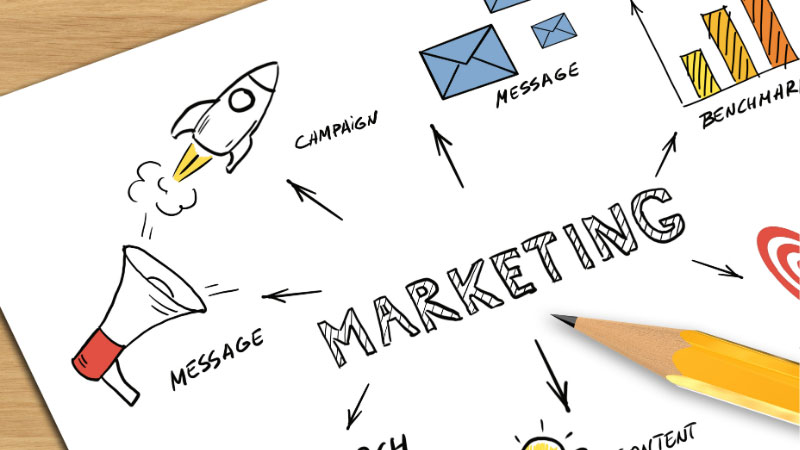In the competitive world of digital advertising, businesses often face the critical decision of choosing between performance marketing vs brand marketing. Both approaches have unique strengths, making them essential tools in a marketer’s toolkit. However, selecting the right strategy depends on your goals, budget, and audience. This article explores the nuances of these marketing strategies, helping advertisers decide which path best suits their needs.

Understanding the Basics of Performance Marketing
Performance marketing focuses on driving measurable actions, such as clicks, leads, or conversions. It’s a results-driven strategy where advertisers pay only when a specific action is completed. Common platforms include social media, search engines, and programmatic advertising.
Key Features of Performance Marketing
- Measurable Results: Every campaign is tied to key performance indicators (KPIs) like click-through rates (CTR) or cost per acquisition (CPA).
- Budget Control: Advertisers have greater control over how and where money is spent.
- Real-Time Analytics: Campaign performance can be tracked and optimized in real time.
Examples of Performance Marketing Channels
- Search Engine Marketing (SEM): Ads displayed on search engine results pages, targeting users based on keywords.
- Social Media Advertising: Platforms like Instagram and LinkedIn help target niche demographics.
- Connected TV Advertising: Combines performance marketing principles with the reach of traditional TV by delivering measurable outcomes on over-the-top (OTT) platforms.
Decoding Brand Marketing
Brand marketing focuses on creating awareness and fostering loyalty. Instead of immediate actions, the goal is to establish a strong identity that resonates with the audience over time. Think of iconic brands like Nike or Coca-Cola, whose campaigns emphasize storytelling and emotional connection.
Key Features of Brand Marketing
- Long-Term Focus: Builds a brand’s identity and trust over months or years.
- Emotional Engagement: Creates campaigns that appeal to values, culture, or aspirations.
- Broader Reach: Typically involves mass media like TV advertising or print, but also extends to digital channels.
Examples of Brand Marketing Tactics
- TV Advertising: Reaching broad audiences through impactful, visually engaging campaigns.
- OTT Advertising: Similar to TV but leverages digital platforms for targeted outreach.
- Content Marketing: Blogs, videos, and infographics designed to educate and inspire rather than sell directly.
Performance Marketing vs Brand Marketing: A Side-by-Side Comparison
To better understand the differences, let’s compare these strategies based on key parameters:
| Aspect | Performance Marketing | Brand Marketing |
| Objective | Drive measurable actions | Build brand awareness and loyalty |
| Timeline | Short-term, immediate impact | Long-term, gradual growth |
| Measurement | Easily measurable metrics like CTR or ROI | Harder to measure; focuses on perception |
| Channels | Digital-first, including search and social | TV, OTT, and content-driven platforms |
| Budget | Often lower initial cost | Requires significant investment upfront |
| Engagement | Transactional | Emotional |
When to Choose Performance Marketing
Performance marketing is ideal for businesses that need quick results and have a clear action in mind, such as increasing sales or generating leads. It’s also particularly useful for startups and small businesses with limited budgets.
Scenarios for Performance Marketing
- Demand Generation: Launching a new product and seeking immediate traction.
- Budget Constraints: Smaller businesses aiming to maximize ROI with limited funds.
- Data-Driven Decisions: Businesses that thrive on analytics and optimization.
Example: An online retailer uses connected TV advertising to drive app downloads, ensuring measurable results like cost per install (CPI).
When to Opt for Brand Marketing
Brand marketing is more suitable for companies with established products or services that want to differentiate themselves in crowded markets. It’s about creating a memorable brand identity that consumers trust and turn to.
Scenarios for Brand Marketing
- Competitive Markets: Standing out in saturated industries.
- Long-Term Growth: Building a legacy and customer loyalty.
- Emotion-Driven Purchase Decisions: Products that require trust and credibility, such as luxury goods or financial services.
Example: A sustainable fashion brand runs an OTT advertising campaign highlighting its eco-friendly practices to build a loyal audience.
Can These Strategies Work Together?
Absolutely. The most successful campaigns often integrate both performance marketing and brand marketing. By combining short-term actions with long-term vision, businesses can create a well-rounded strategy.
Example of Integration
- Performance Marketing for Immediate Impact: Use programmatic advertising to drive clicks to a landing page.
- Brand Marketing for Longevity: Simultaneously run connected TV advertising to boost brand awareness among a broader audience.
This synergy ensures consistent visibility while driving measurable results.
Factors to Consider When Choosing a Strategy
Selecting the right approach depends on several variables:
1. Business Goals
- Want immediate sales? Opt for performance marketing.
- Looking to build a household name? Invest in brand marketing.
2. Budget Allocation
- Limited funds often favor performance marketing.
- Larger budgets can support long-term brand-building campaigns.
3. Industry Type
- Performance marketing suits e-commerce and tech startups.
- Brand marketing benefits industries like fashion, automotive, or healthcare.
4. Target Audience
- For precise targeting, use performance marketing via digital channels.
- For broad appeal, leverage TV or OTT advertising to create brand affinity.
The Role of Connected TV in Modern Advertising
Connected TV (CTV) advertising bridges the gap between brand and performance marketing. It allows businesses to reach wide audiences while tracking campaign performance, making it a hybrid solution.
Benefits of CTV Advertising
- Targeted Reach: Combines the broad reach of traditional TV with the precision of digital marketing.
- Measurable Outcomes: Tracks impressions, conversions, and ROI, akin to performance marketing.
- Dynamic Content: Enables personalized messaging to align with both short-term and long-term goals.
Conclusion
Choosing between performance marketing and brand marketing isn’t a one-size-fits-all decision. Both strategies have unique advantages, and the right choice depends on your business objectives, resources, and target audience. By understanding these approaches and leveraging tools like connected TV advertising, advertisers can create campaigns that drive immediate results and foster lasting relationships.
When considering performance vs brand marketing, remember that the most effective strategies often blend the best of both worlds. Use this guide to align your advertising efforts with your broader goals and ensure long-term success in a competitive landscape.









